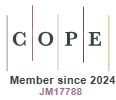Downloads
How to Cite
Vishal, C., Kumar, J. U., Swamy, C. V. B., Nandini, R., Srinivas, G., Kumaresan, R., Shashi, S., & Sreedhar, A. S. (2011). Repercussion of Mitochondria Deformity Induced by Anti-Hsp90 Drug 17AAG in Human Tumor Cells. Drug Target Insights, 5(1). https://doi.org/10.33393/dti.2011.1370
Issue
Section
Original Research Article
Statistics
- Abstract views - 803 times
- PDF downloads - 334 times
Sign up
Browse
Most read in the last 30 days
-
235
-
207
-
174
-
169
-
151









